Town History
Axbridge is Somerset’s smallest town, in Southwest England. It is in the former Sedgemoor district of Somerset, sitting on the River Axe at the southern edge of the Mendip Hills and 3 miles West of Cheddar Gorge. The town’s population (according to the 2021 census) was 2,000.
The entry to the town from West Street through to High Street is a visual feast for lovers of history and architecture. With half-timbered and stone traditional buildings leaning towards each other across the narrow road that lead to the Medieval Square in this picturesque town. There is an Axbridge Heritage Trail, which you can follow to learn more about the buildings as they each have blue plaques and if you scan the QR codes in the windows you’ll find out more about the history of the property and the people who lived in them.
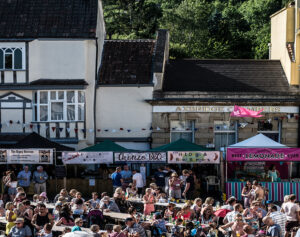
To the north, the Mendip Hills rise high above the town and provide excellent walking routes and vantage points to see the expanse of the Somerset Levels to the south.Once a river port and valued for its wool production, early inhabitants of the area almost certainly include the Romans (who are known to have mined lead on the top of the Mendips) and earlier still, prehistoric man, who lived in the local caves, and whose flint tools have been found on the slopes of the local hills. The history of Axbridge can be traced back to the reign of King Alfred when it was part of the Saxons’ defence system for Wessex against the Vikings. In the Burghal Hidage, a list of burhs compiled in 910, it was listed as Axanbrycg. A listing of Axbridge appears in the Domesday survey of 1086 as Alse Bruge, meaning ‘axe bridge’ from the Old English isca and brycg.
Axbridge was granted a Royal Charter in 1202 when King John sold most of the royal manor of Cheddar to the Bishop of Bath and Wells. Axbridge grew in the Tudor period as a centre for cloth manufacture, which was reflected in its early royal charters allowing it to hold markets and fairs, and become a royal borough. It had its own mint, with coins showing the town’s symbol: the lamb and flag. The River Axe was navigable to wharves at Axbridge, facilitating world trade.
The town’s prosperous past is reflected in the quality of the buildings, particularly the fine 13th century St John’s Church which is the oldest to survive, dating back to 1245, and King John’s Hunting Lodge (which is now a National Trust property housing a museum of local history) which despite its name, is actually early Tudor with wonderful uneven floors.
Axbridge Museum contains the village stocks among other curiosities – which belies that not all of the residents were well off. As does the Axbridge Union Workhouse which is behind West Street. Well into the 19th century it was customary once a year for a bull to be chased out of The Square and butchered to feed the poor.
Other historical buildings are too numerous to mention, however particular highlights are The Drugstore and The Almshouse. High Street, West Street, The Square and St Mary’s Street are packed with architecture of real note and beauty.
King John’s Hunting Lodge
Housed in in a 15th century merchant’s house. The museum is run by The Axbridge and District Museum Trust, a group of dedicated local volunteers and the building is owned by the National Trust.
Open: April to October
Opening times are 1:00pm to 4:00pm TUESDAYS to SUNDAYS. Closed on Mondays.
Entry is FREE to everyone
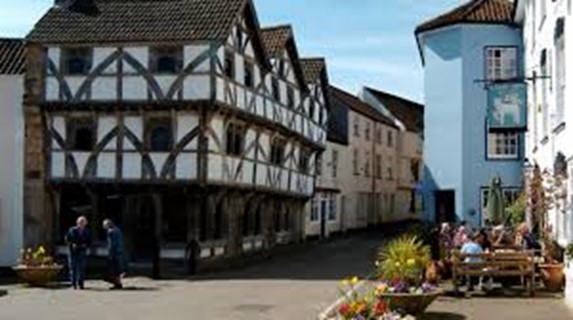
ACCESSIBILITY: Our building dates from the 15th century. Access to the upper two floors is via a spiral staircase and it not suitable to those with limited mobility. There is wheelchair access to the ground floor where there is both a screen and booklet.
The museum contains a wide range of exhibits including the Axbridge Nail, the Town Stocks, the town’s 18th century Fire Engine, a room dedicated to the Axbridge Workhouse and many other items of local historic interest.
Volunteers welcome
Our museum is entirely dependent on volunteer support. We have a friendly and welcoming team and welcome new faces to join us in meeting and greeting visitors.
Treasurer vacancy
We are looking for a new Treasurer. Taking between one and four hours a week, with one evening meeting a month, the role would suit an experienced Treasurer, bookkeeper or accountant.
Visit the King John’s Hunting Lodge website for further details.
St John the Baptist Church
Work on the current building began in the early 1400s and grew from an earlier building dating back to about 1230. (The earliest recorded Rector’s name dates from 1264.)
St John the Baptist Church is strikingly placed on its small hill, dominating the town square, which itself still keeps its medieval shape. The entrance from church steps is narrow, so that the full beauty of the building is only gradually revealed as you approach.
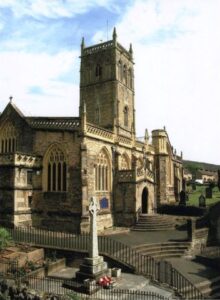
War Memorial
The Axbridge War Memorial commemorates soldiers from the town who fell in the first and second world wars and is situated near the top of The Church Steps in The Square. On Remembrance Sunday the town gathers at the memorial and in the church to remember and pay its respects to those lost in the wars or impacted by conflict.
Axbridge Town Council has taken responsibility for the upkeep of the memorial and its insurance with the Town Trust who maintain the surrounding garden.
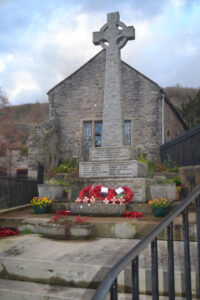
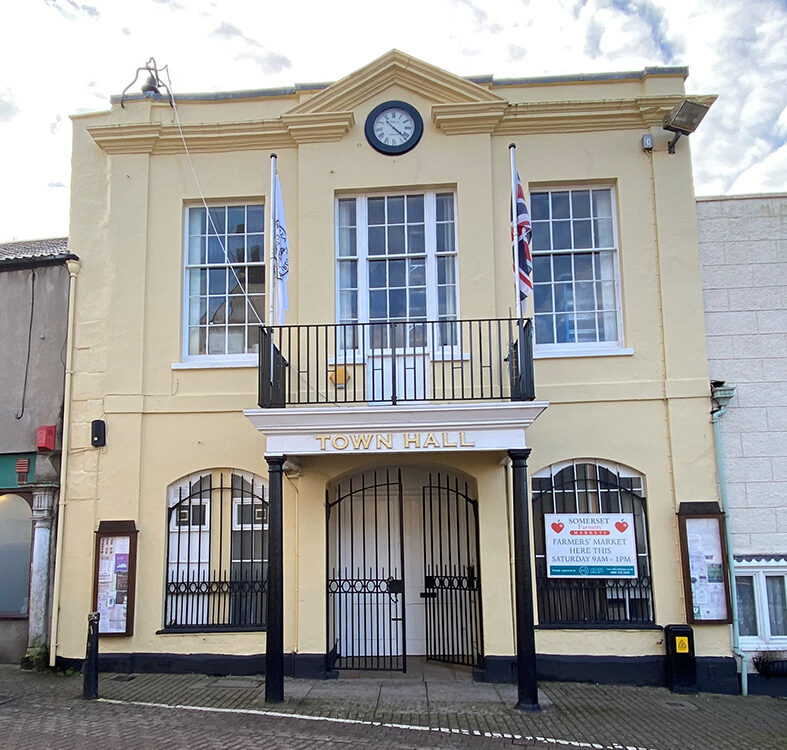
Axbridge Town Hall
Axbridge Town Trust manages several assets in the Town including Axbridge Town Hall. This grade II listed building dates back to 1830 although there have been modifications to its structure over the years.
Axbridge Town Hall hosts many events in Axbridge. The Town Hall itself (ground floor) is ideal for all types of function and has been used for formal dinners, dances, parties, plays, exhibitions and formal gatherings (Mayor Making, Annual Assembly etc.) and regular activities such as Yoga.
